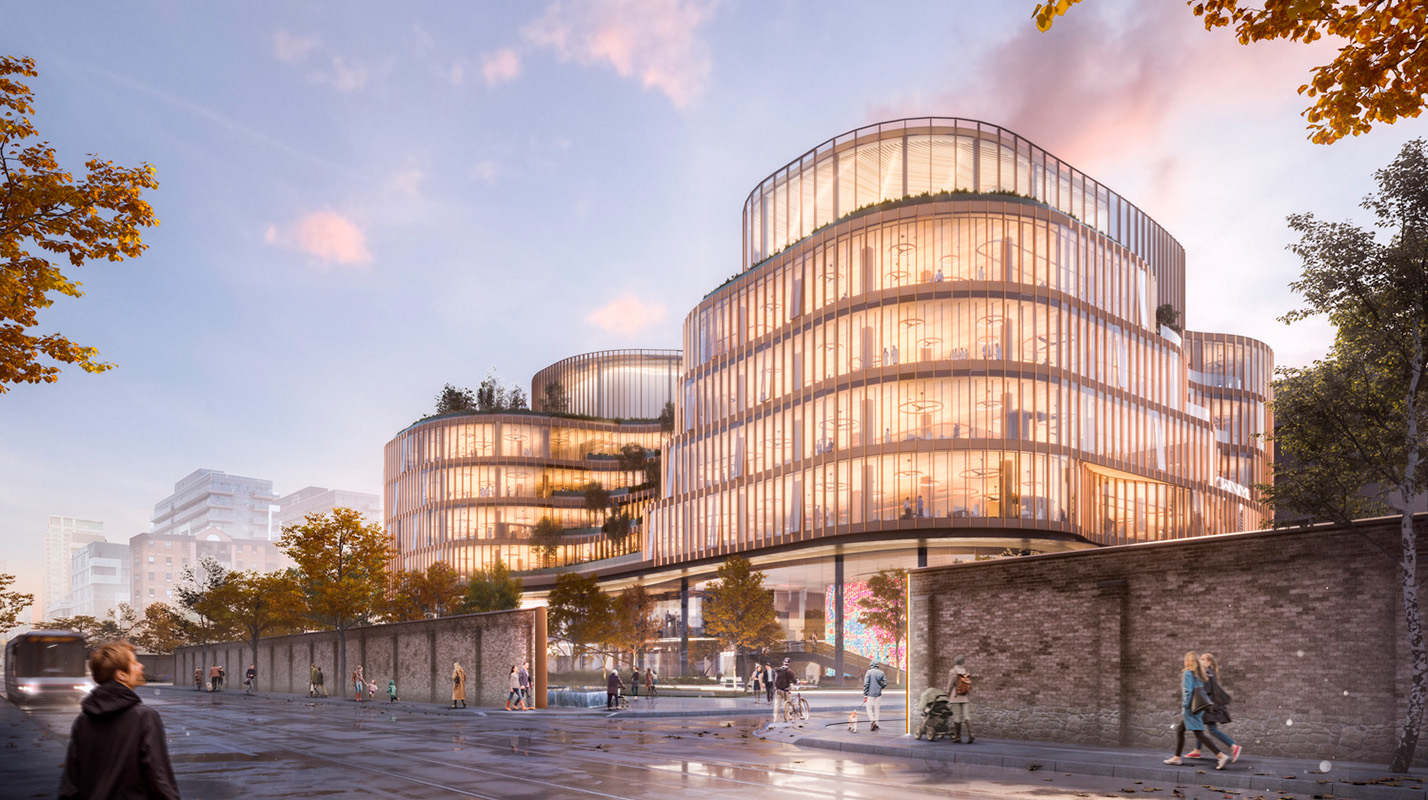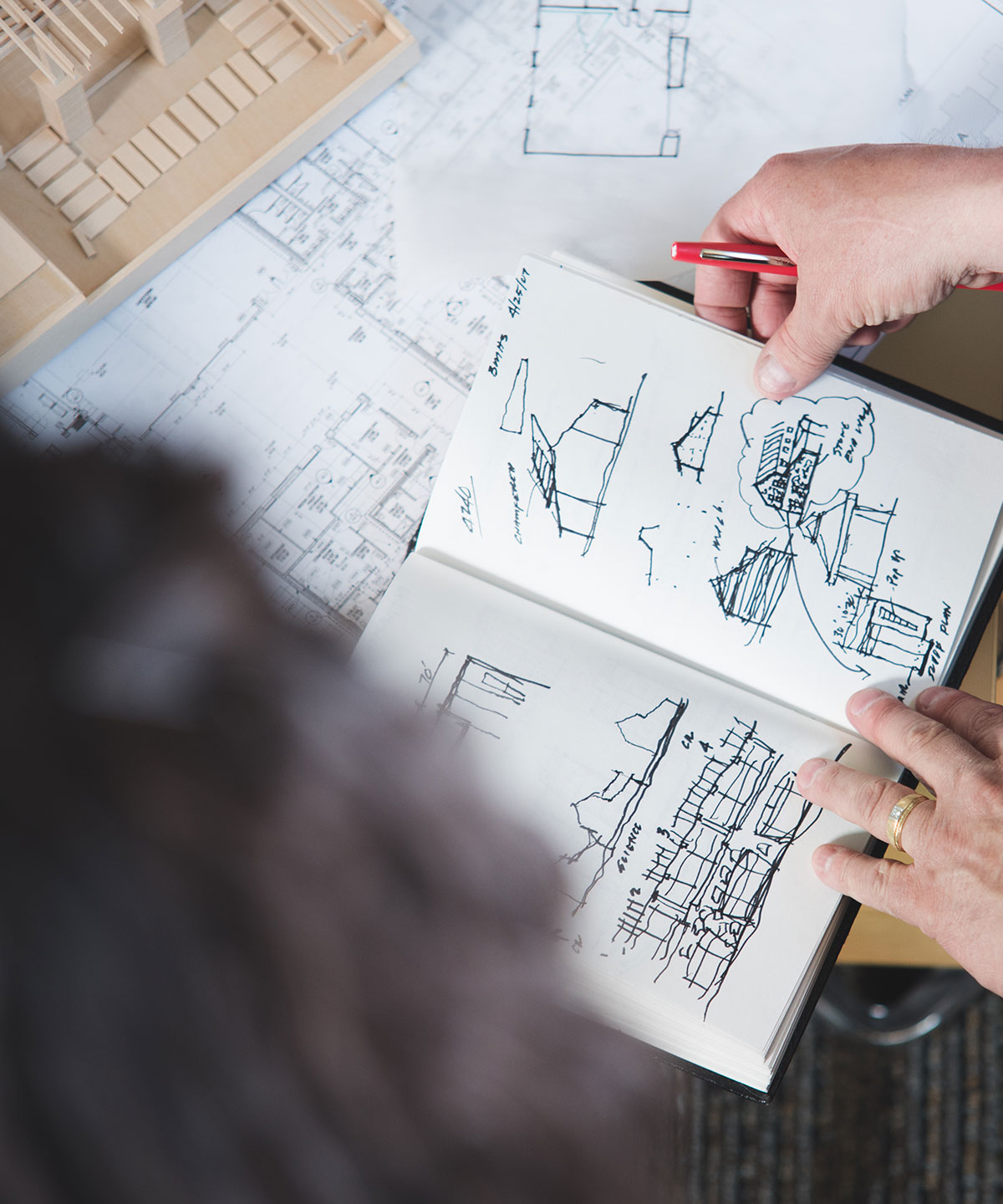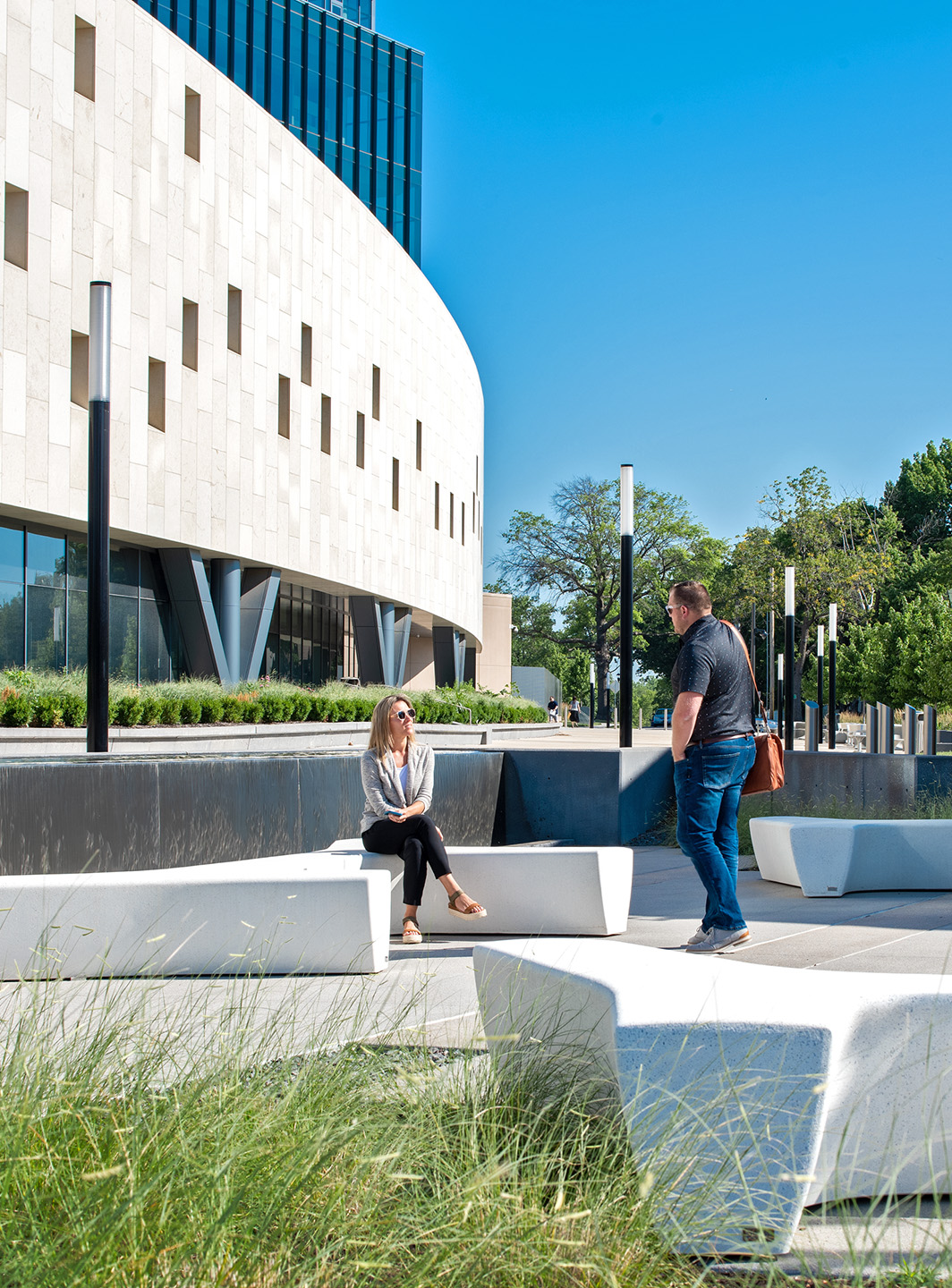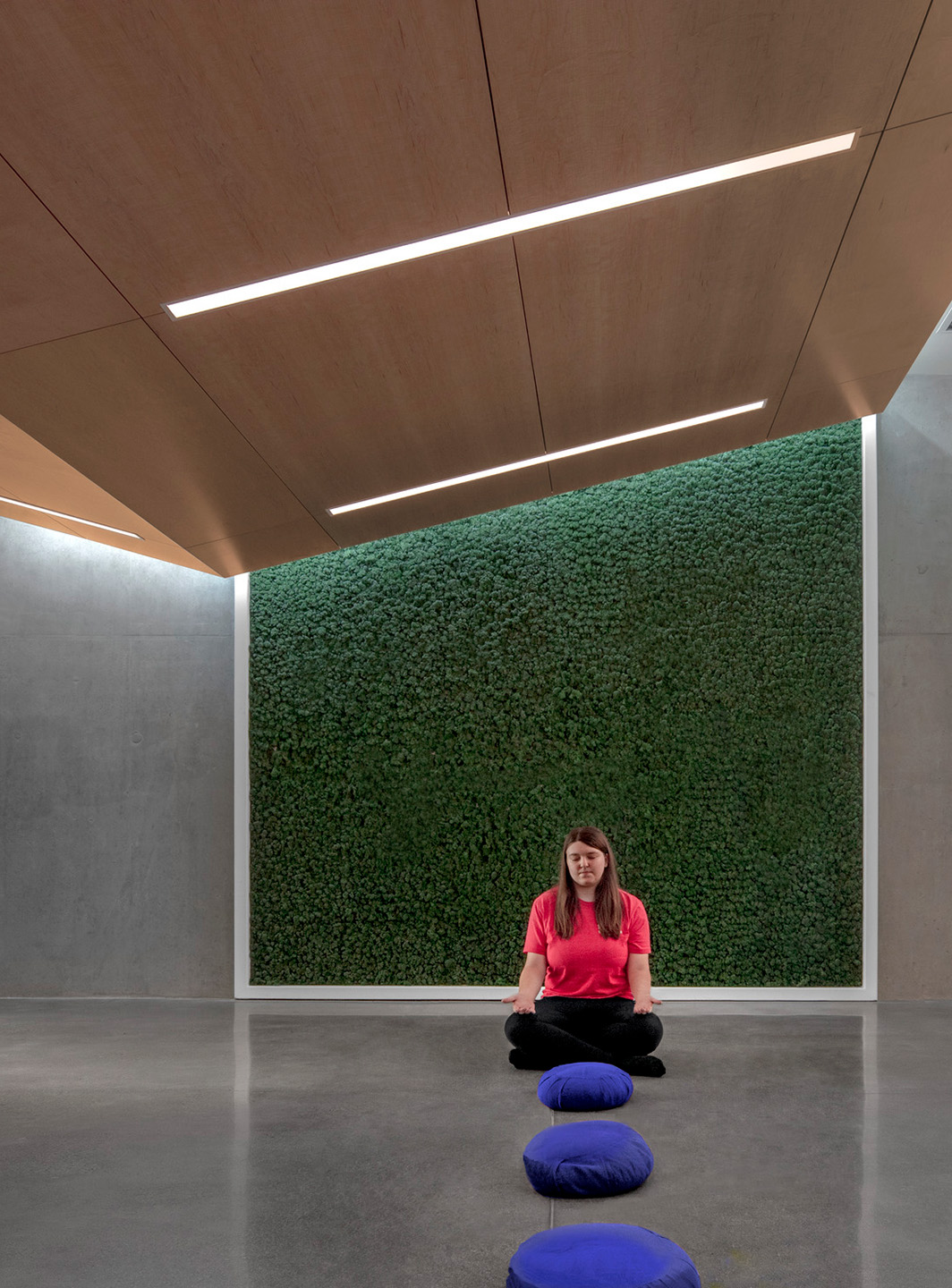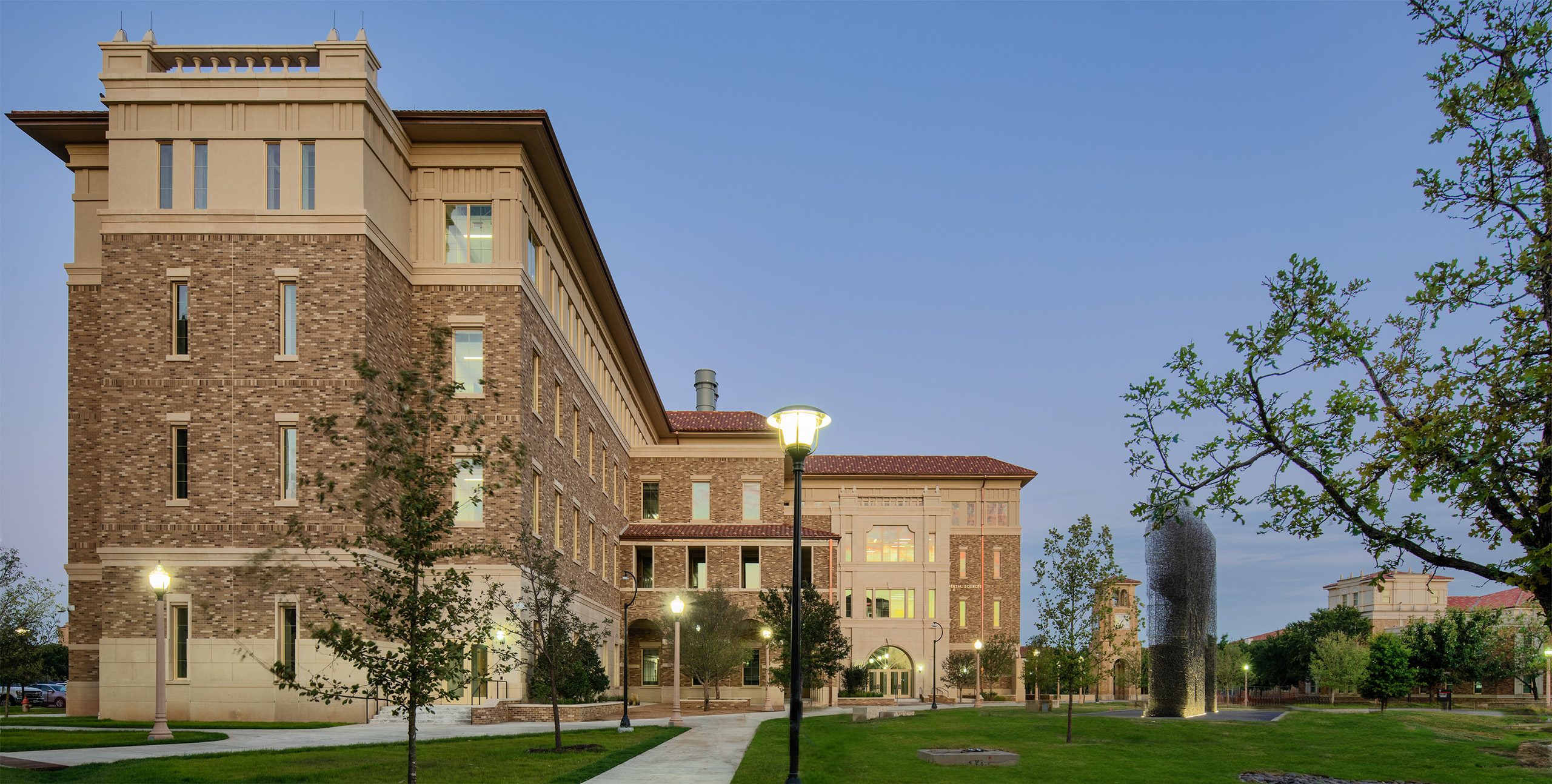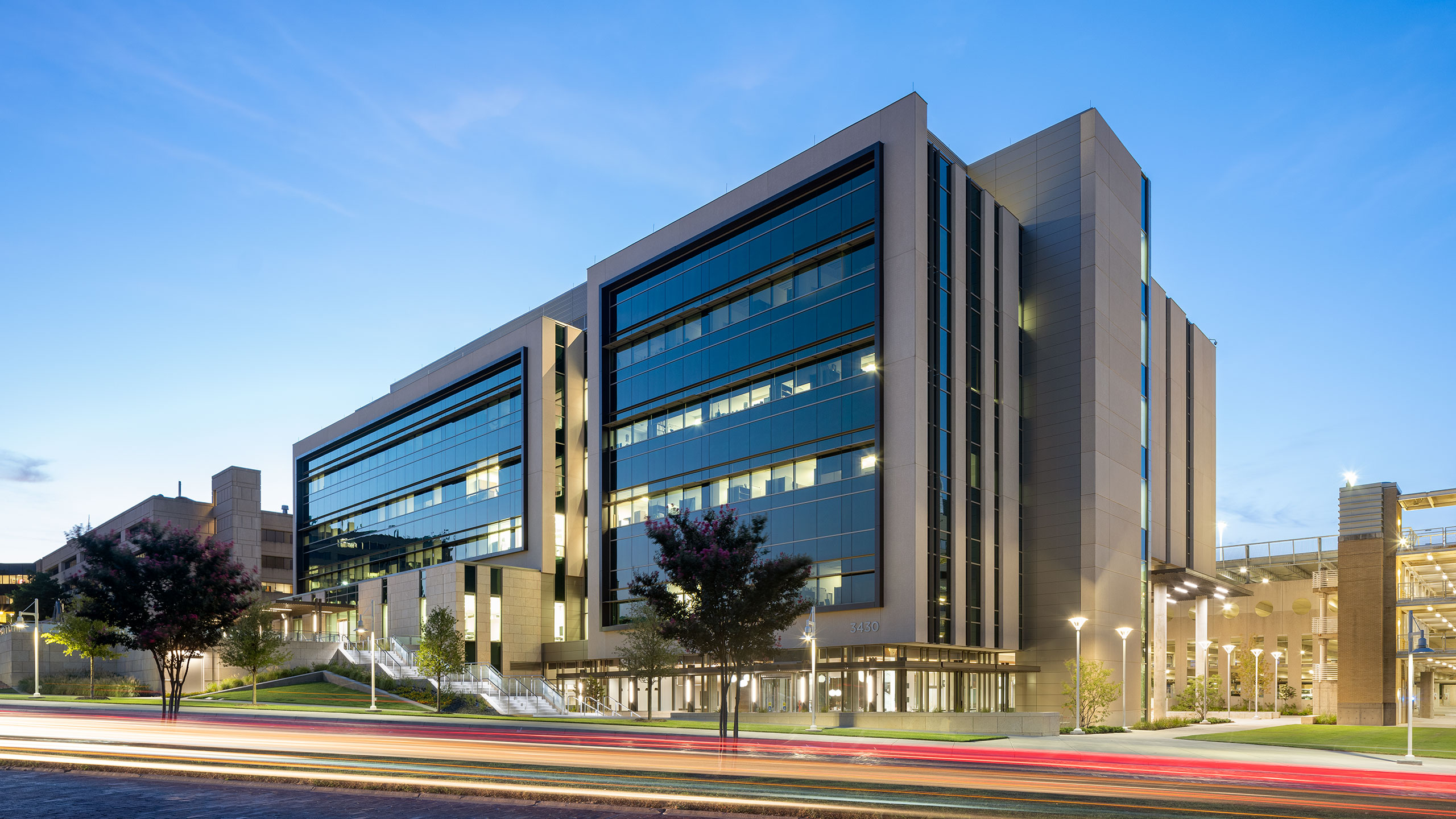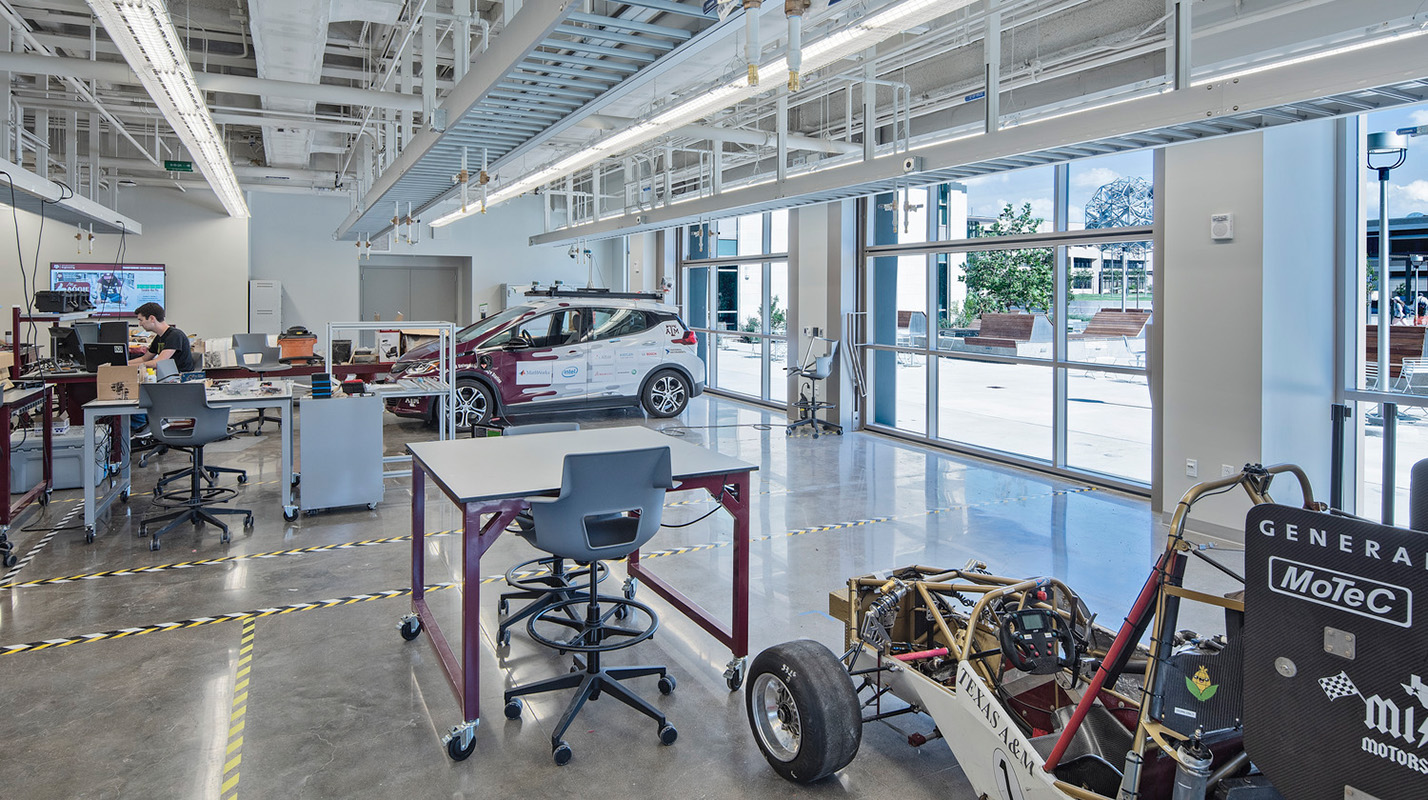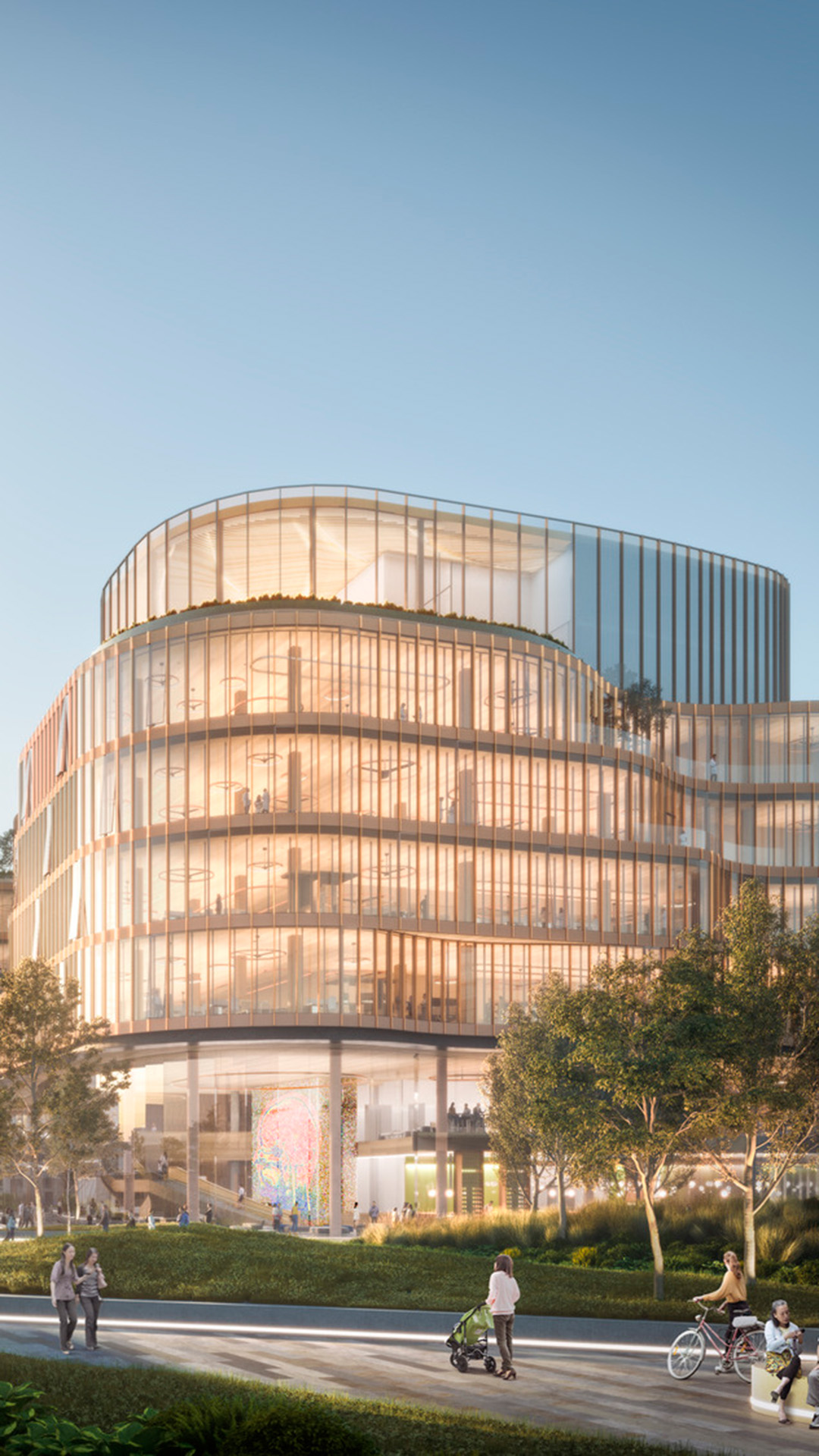
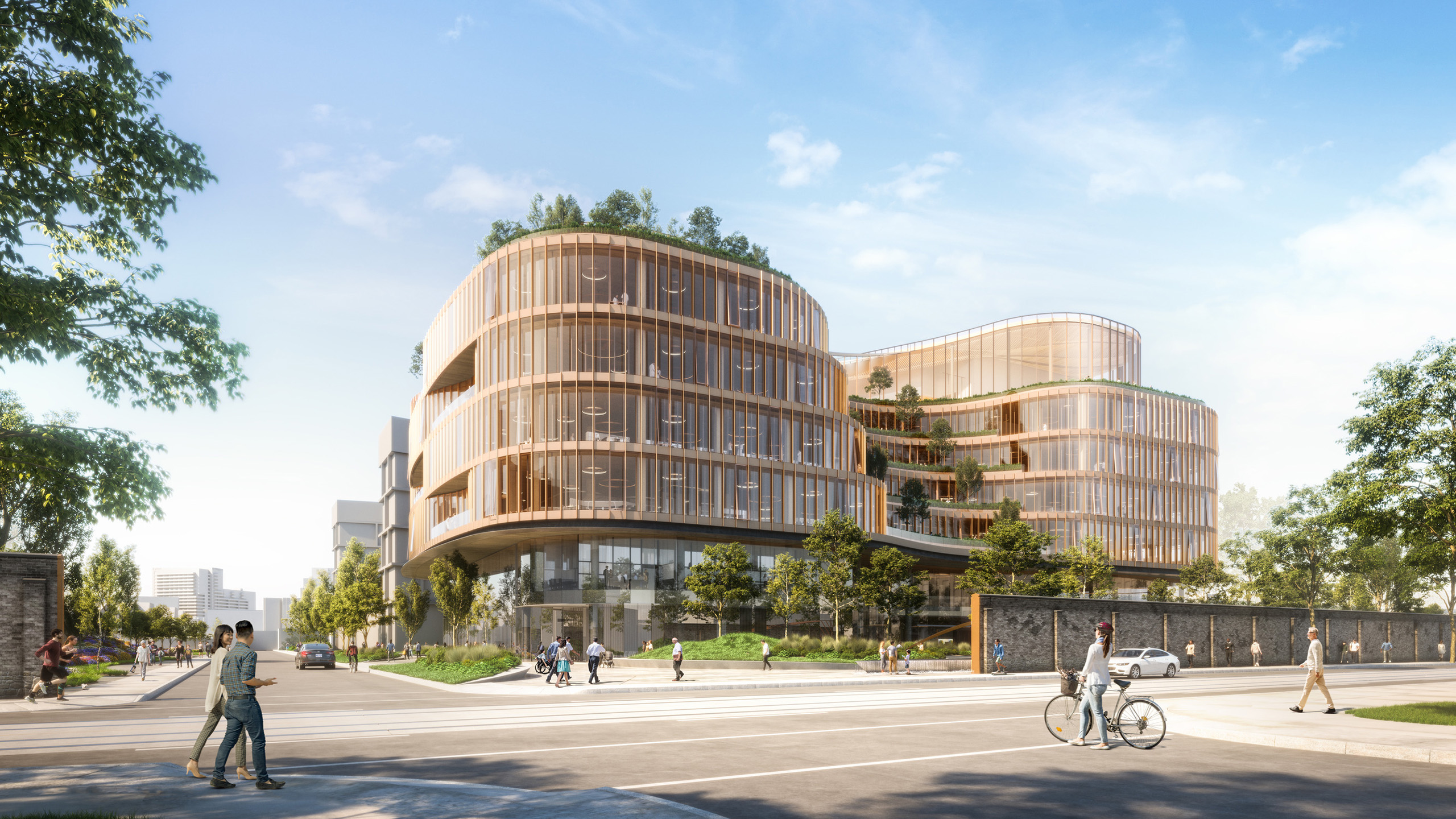
Temerty Discovery Centre
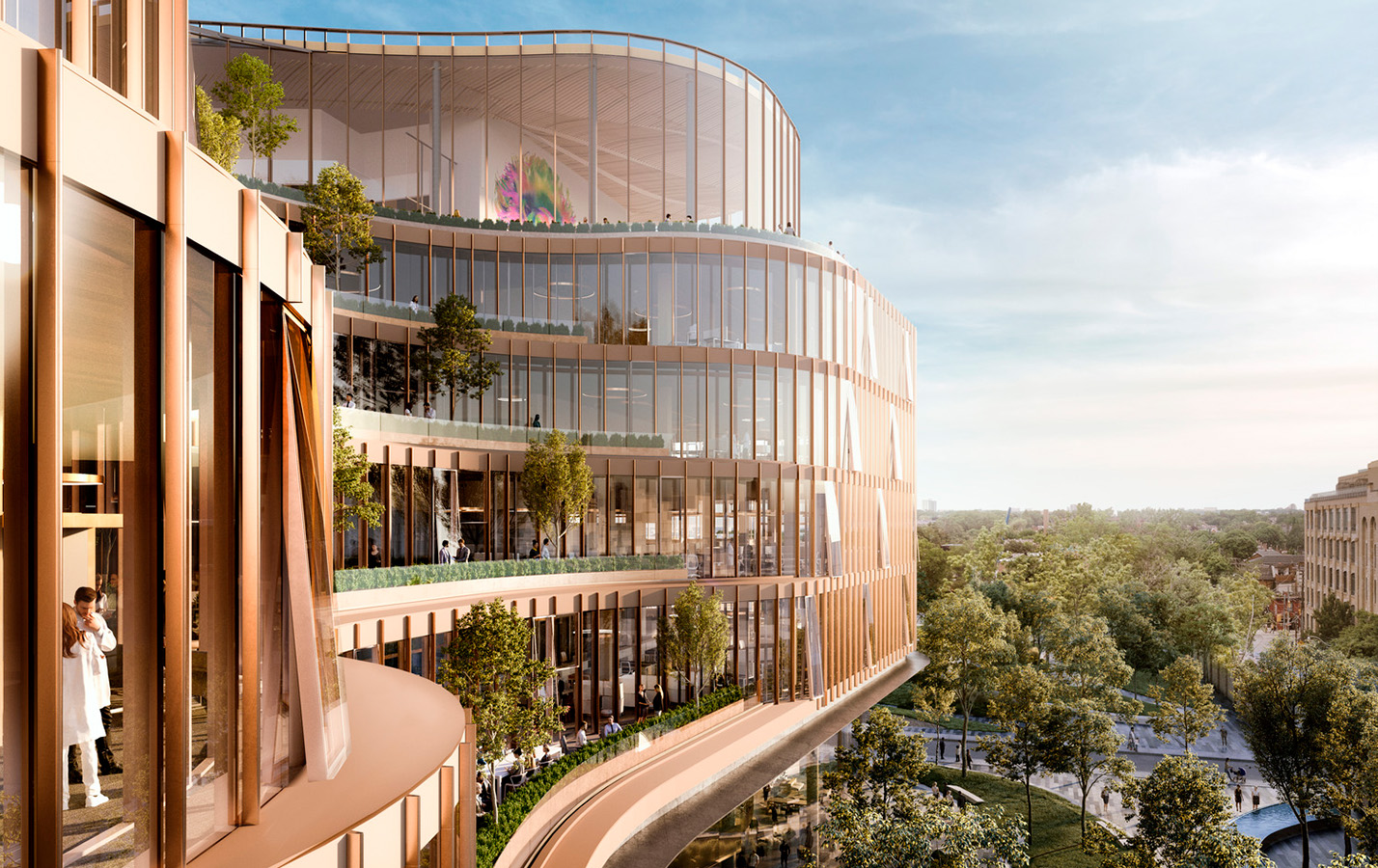
Creating a beacon of hope and the most recognizable symbol of brain science and mental health discovery in the world
The statistics are staggering. 970 million people globally live with a mental health condition. Since the pandemic, 1 in 6 adolescents in the United States have experienced a major depressive episode. 12+ million U.S. adults have had serious thoughts of suicide. Drug and alcohol use has increased by 15-20% nationally.
The Centre for Addiction and Mental Health (CAMH), based out of Toronto, is dedicated to helping improve outcomes related to mental health and addiction through empowerment, research, public resources, and treatment. As part of that commitment, they sought to create an iconic facility that brings together leading researchers from around the world to improve our understanding of mental health and discover groundbreaking treatments.
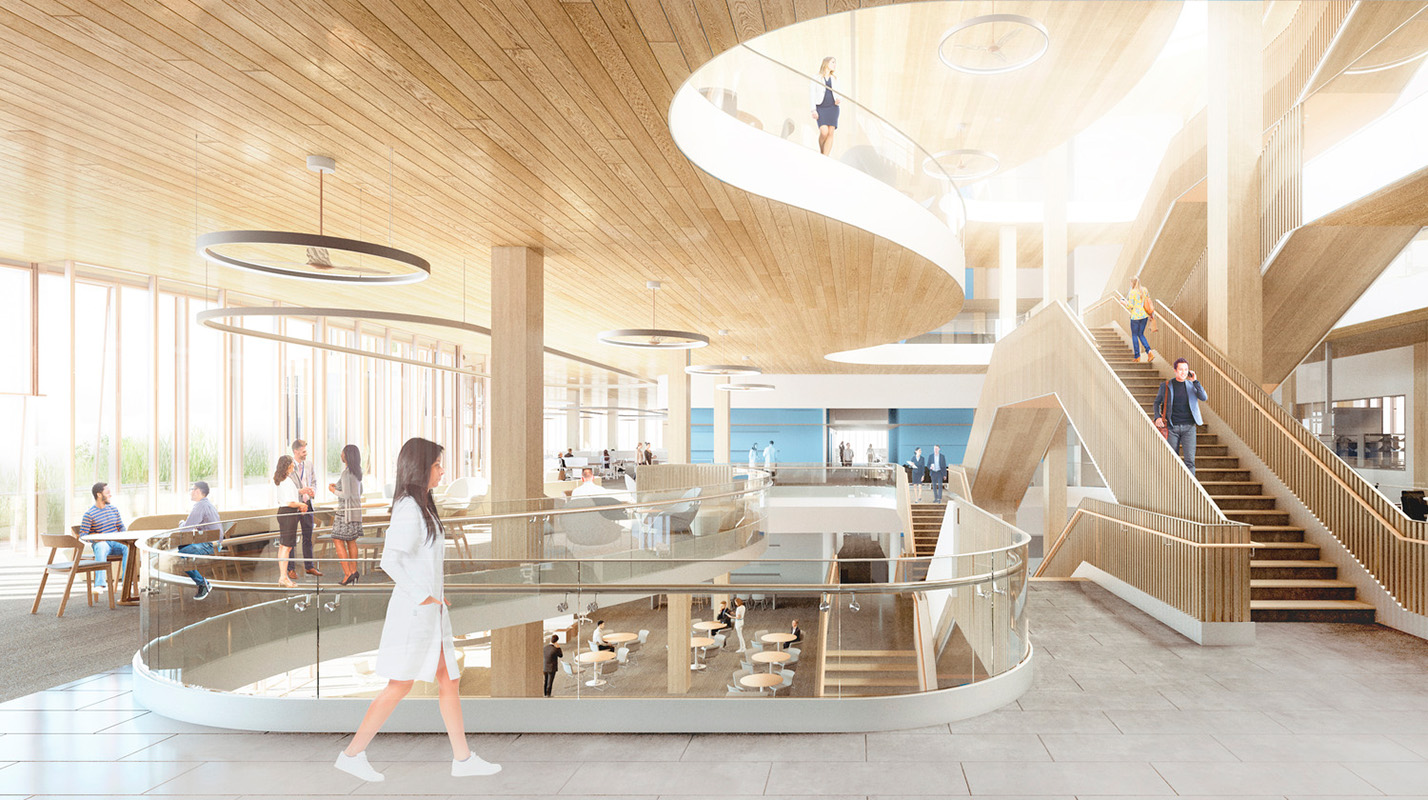
Programming multifunctional spaces to support all staff needs
In 2017, Treanor’s Higher Education team worked with CAMH to provide functional programming services for the new Temerty Discovery Centre at their Queen Street location. Programming was completed in four months based on an interactive and collaborative process. Each multi-day workshop included meetings with stakeholder and user groups, and wrap-up meetings with the core committee. The process was iterative, allowing the team to build and expand on information provided at each workshop session.
Programmed spaces are multifunctional to support all types of CAMH staff needs, including individual and small group areas, team gathering spaces, lunch and break spaces, formal and informal meeting spaces, and areas to host social events.
Preclinical
The preclinical area in the building is made up of three main components: a rodent based animal facility, wet laboratories, and necessary staff work spaces. Clinical spaces within the building include a research participants area, staff support spaces, and staff workspaces.
Research Imaging Centre
The Research Imaging Centre is made up of the imaging and scanning area (including the PET Centre and the MRI Unit), the Centre for Neuroradiochemistry, and teamwork spaces. The Neuroradiochemistry Centre includes a cyclotron bunker area and the PER manufacturing area.
Wet laboratories
Wet laboratories and laboratory support spaces have been programmed to be flexible and adaptable to support current and future needs.
Neuroinformatics and Research Services
The Centre for Neuroinformatics and the Research Services Office include spaces for “dry” computational work accomplished in private offices, workstations, team rooms, meeting rooms, privacy booths and collaboration spaces.
Institute for Mental Health Policy Research
In addition to the testing spaces identified as part of the clinical area, the IMHPR includes spaces for “dry” computational work accomplished in private offices, work stations, private meeting rooms, and mobile lab work rooms.
Building amenities
Building amenities include the main entry, spaces associated with the Learning Centre, and staff collaboration and contemplation spaces. These spaces support individuals and small groups, team gathering, lunch and break areas, formal and informal meetings, and social events. The program also includes third-party amenities such as a wellness centre and a cafeteria.
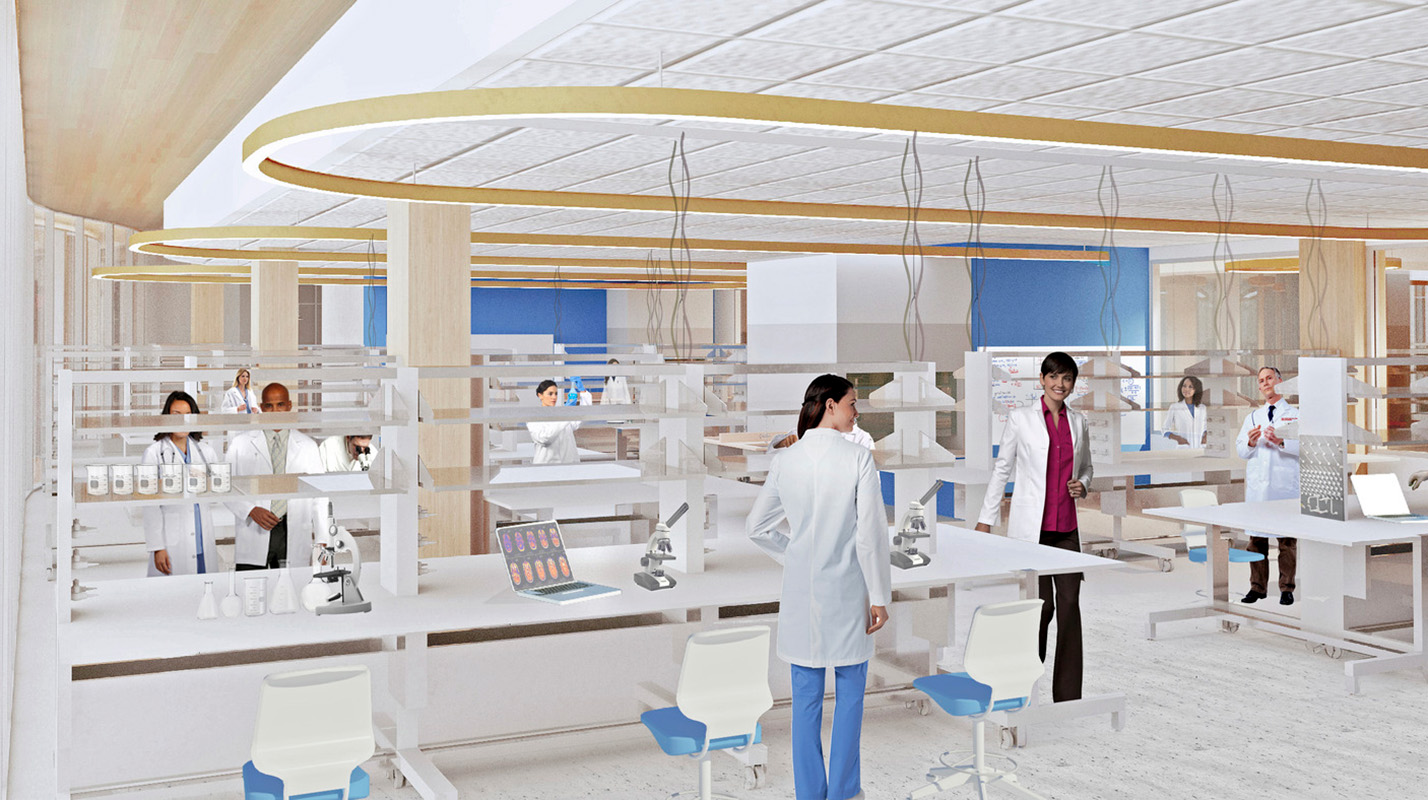
Breaking ground in design and in research
To battle the stigma associated with mental health and addictions, CAMH needed a design that pushed boundaries to create a place where innovation, discovery, and hope are commonplace. After a five-month-long international design competition in 2018, our Treanor/KPMB Architects team was selected to provide comprehensive design services for the new Research and Discovery Centre.
The design is rooted in CAMH’s strategic plan that brings their vision, purpose, and values into reality. By combining the talents and passions of CAMH team members with the convergence of architecture, engineering, landscape, and urban design, our client is showing the world that transformative change is possible and dreams for a better future can be realized. A global symbol and iconic destination, CAMH’s research building will provide a collaborative, state-of-the-art destination for leading professionals from around the world to conduct landmark research on mental illness and addiction.
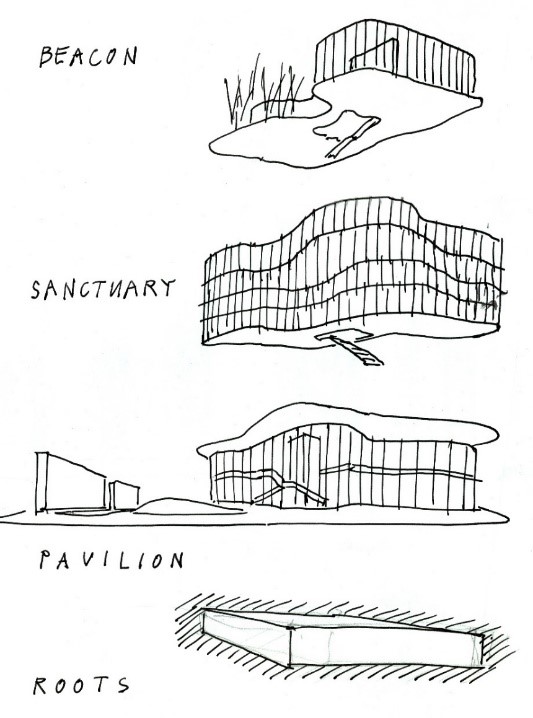
The beacon
To extend opportunities for broad stakeholder interaction and global symbolism, the seventh level is proposed as a beacon event space. Together with the multipurpose active learning center, this rooftop gathering and event space will activate the new research building as an international platform for CAMH’s future success, supporting research programs, mental health awareness, and the connection to diverse communities worldwide.
The sanctuary
The four-story timber and glass research sanctuary is the main body of the building. Separated from the public pavilion, this open and flexible structure creates a secure and supportive platform for teamwork and individual research. A series of oases and meeting spaces organized around the central atrium stairs unifies the world of research. On the fourth and fifth levels along the west, glass-fronted laboratories and support spaces further bind the building hemispheres together.
The pavilion
The two-story pavilion is the new heart for the entire CAMH community. The essential character is communal, expressing dignity and civility. It includes the main amenities of program, including the wellness center, the café/bistro, the multipurpose active learning center, the research clinical area, and the imaging center.
The research roots
All research conducted within this new facility is dependent upon the foundational components secured below grade. These foundational components include the preclinical animal facility and associated wet laboratory spaces, and the Centre for Neuroradiochemistry.
Mental health is health: for patients and for CAMH staff
The end goal for CAMH is to provide a safe, comfortable, and welcoming environment where patients are treated with dignity and social attitudes toward mental illness are changed. The building supports staff through the integration of architecture, landscape, engineering, workplace strategy, sustainability, and technology to nurture individual-focused work and broad stakeholder interaction through extensive collaboration, innovation, and convergence science design elements. This convergence, and the light-filled interior that incorporates generous views and access to nature, results in a highly supportive, adaptable, and inclusive environment.
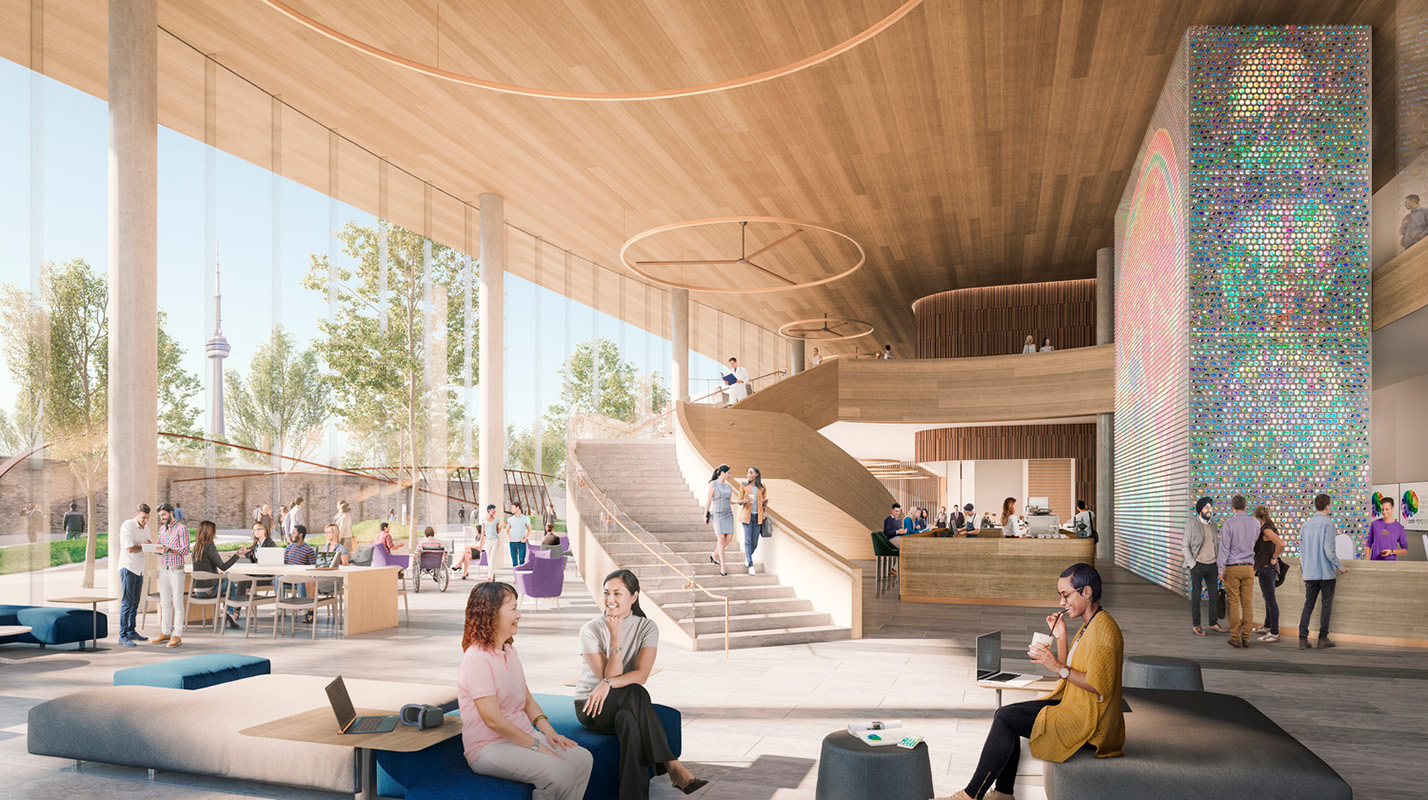
Interconnected by a large central atrium and butterfly stairs, multiple floors of staff workspace and laboratories are surrounded by amenities like staff oases, meeting spaces, and access to outdoor terraces on every floor. The east side of the building will overlook a collaboration garden with large and small group gatherings and individual reflection spaces, interconnected through a series of pathways. Biophilia is incorporated throughout the facility, and a series of step-backs in the façade and a large skylight in the open atrium ensure that every staff member in the building will have access to natural daylight.
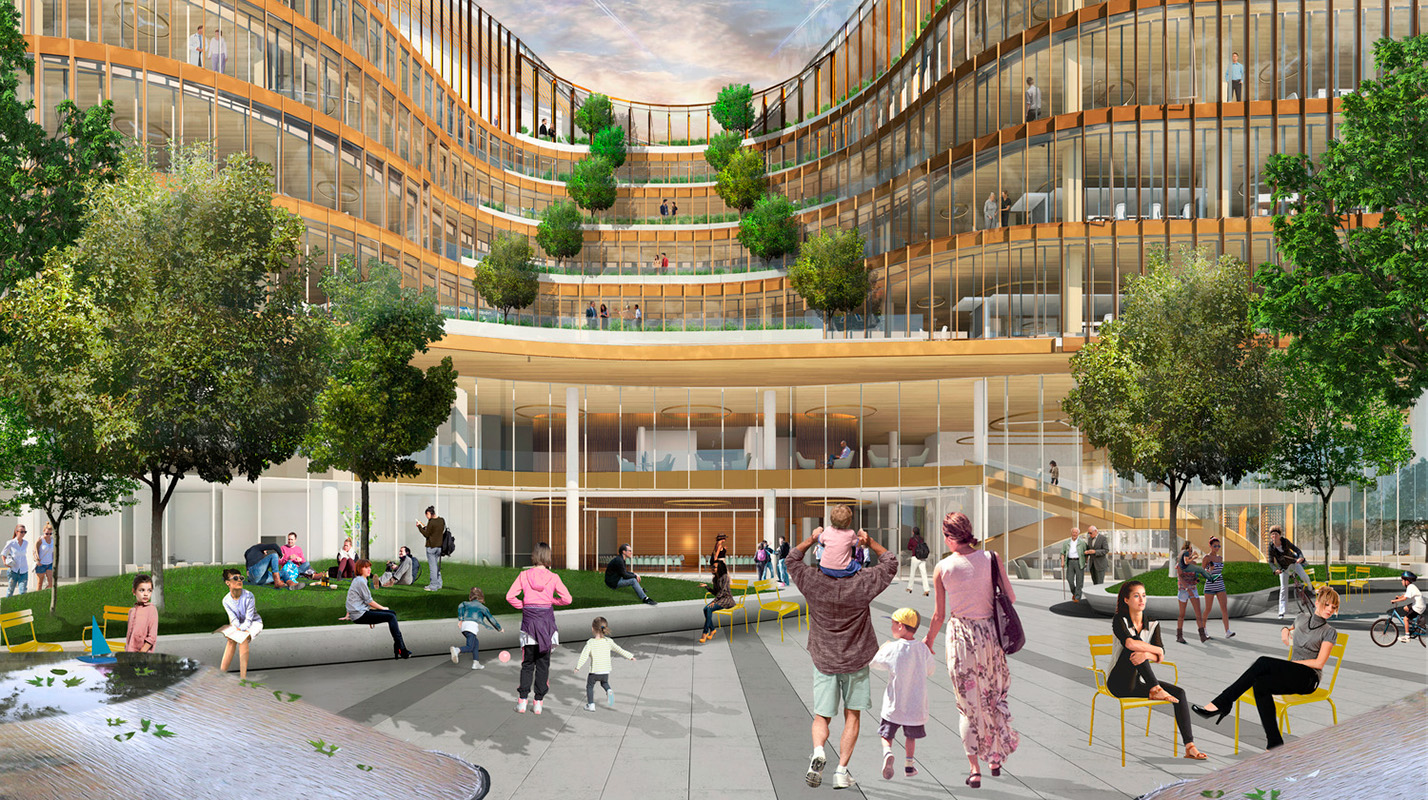
Building performance objectives
One of CAMH’s goals for the project is to create a robust environmentally sustainable and energy efficient building that is a model of advanced practice in environmental design for both research laboratories and academic facilities.
Meet an aggressive Energy Use Intensity (EUI) target
Early in the design competition process, CAMH set a best-in-class energy use intensity (EUI) target (110kBtu/ft2/year) as a driving metric for design success.
Be the first Toronto Green Standards – Tier 3 Laboratory
Our team has worked closely with the City of Toronto and Toronto Green Standards to set progressive energy, water, and vegetation standards for the facility. Once complete, it will be the first research/laboratory building in Toronto to reach a Tier 3 status and will help set the standard for future Tier 3 laboratory buildings.
Achieve LEED Platinum v4
An innovative approach to energy reduction began with the integration of a double façade through most of the building. This provides exceptional thermal resistance and natural ventilation, including operable windows that reduce mechanical and passive systems loads throughout most of the year. Additionally, the large double façade brings in more natural light and reduces the demand for artificial lighting throughout the day.
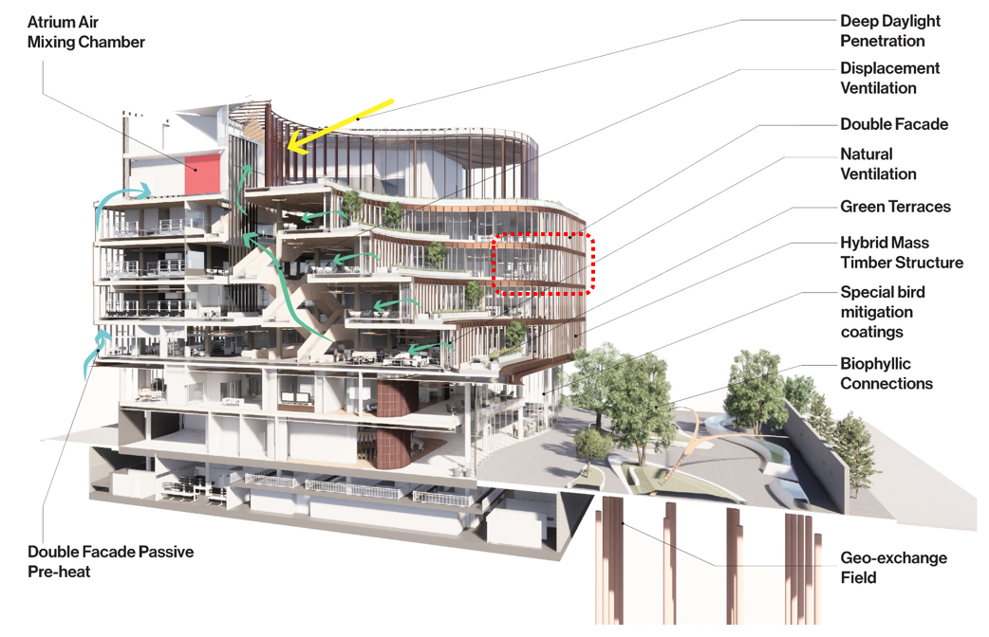
This new research building will be the first Toronto Green Standards – Tier 3 Laboratory, and Achieve LEED Platinum V4. The research building will be a model of advanced practice in environmental design for research laboratories and academic facilities.
Building a future where no one is left behind
In the midst of a global mental health crisis, the new home of CAMH’s state-of-the-art research enterprise will transform the care and treatment for some of the population’s most vulnerable people. It will help further research and discoveries that will improve the lives of people living with mental illness. Once completed, this iconic facility will generate hope and transform mental health care and research at CAMH and beyond.
